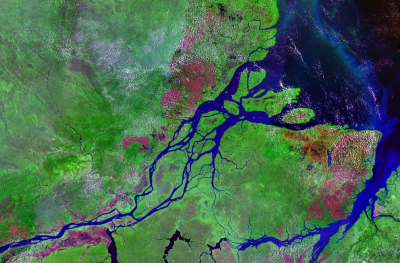Satellites Reveal Room for Improvement for Water Storage Models
December 3, 2018

Research led by The University of Texas at Austin has found that computer models’
estimates of water storage in river basins around the world can differ markedly from
more direct measurements of values gathered by satellites.
The findings, published in the Proceedings of the National Academy of Sciences on Jan. 22, 2018, raise questions about global models that have been used in recent years to help assess water resources and potentially influence management decisions.
“People are depending more and more on global models to determine projections
of the impacts of human water use and climate on water resources,” said lead author
Bridget Scanlon, a senior research scientist at the university’s Bureau of Economic
Geology. “We are now able to evaluate water storage changes from models with
GRACE data, which suggests that the models may underestimate large water storage
changes, both large declining and rising storage trends.”
The study used measurements from GRACE satellites from 2002 to 2014 to
determine water storage changes in 186 river basins around the world and compared
the results with simulations made by seven commonly used models.
For example, in the Amazon River, GRACE data indicate that water storage
increased by 41 to 43 cubic kilometers during the study period — the largest
increase in water storage of any basin in the world. But most of the models projected
huge declines in water storage, with one simulating a loss of 70 cubic kilometers. The
model that most closely matched the GRACE data calculated an increase of only 11
cubic kilometers.
In the Ganges River basin, GRACE showed a loss of 12 to 17 cubic kilometers
of water per year over the 12-year period — the biggest decrease in water storage
measured by the study. The models range between a loss of 7 cubic kilometers and an
increase of 7 cubic kilometers.
Overall, the model results calculated a decline in global water storage during the
study period, while GRACE data indicate it was on the rise. However, the study notes
that while the climate increased water storage globally, humans caused significant
declines in certain regions. The study area covered about 63 percent of global land
area and excluded Greenland and Antarctica because most of the water in those areas
